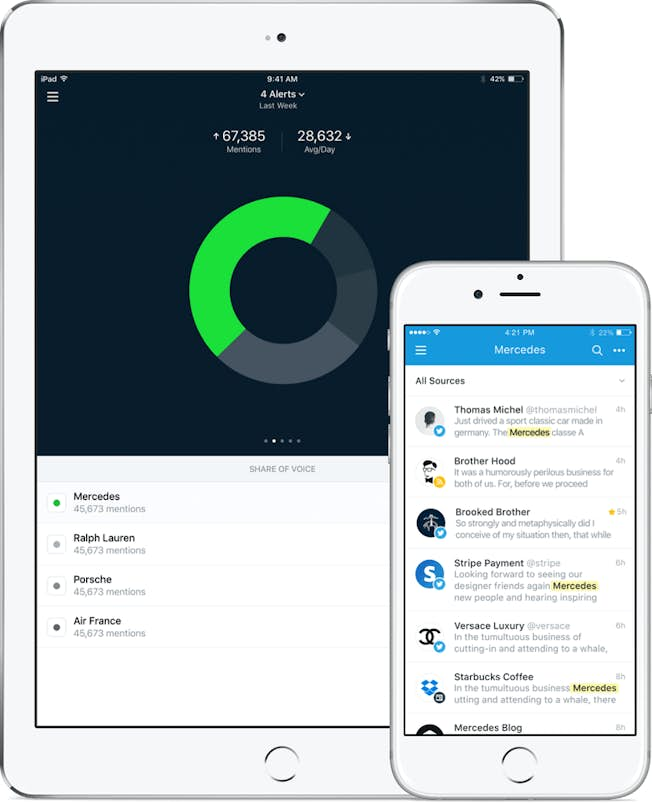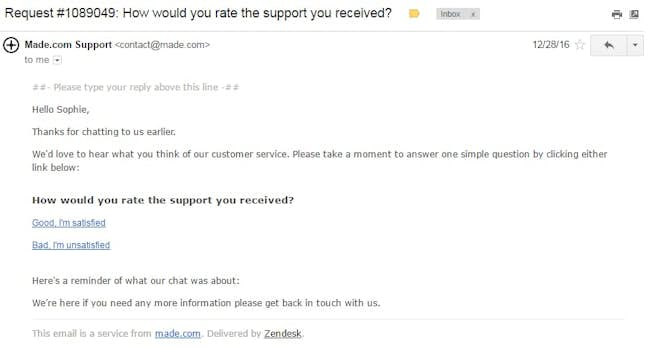Digital channels have placed an increasing emphasis on delivering excellent customer service. Consumers have been empowered with more knowledge, and more choice, and in order to secure their loyalty, brands have been forced to compete with each other to exceed their expectations. In 2015, Facebook influenced 52% of consumers’ online and offline purchases, a figure which continues to grow, and highlights the necessity of nurturing positive customer relationships through a variety of channels.
This can be achieved by following a few essential tips:
1. Be transparent
Social media has empowered consumers, providing them with a very visible platform through which they can express their opinions. For brands, this freedom of expression can be a double-edged sword. While there is no better publicity than an authentic tweet from a customer in praise of your products or services (99% of consumers trust peer recommendations, but only 33% trust ads.), when they decide to use it to publicly vent their frustration, the impact can, to many, seem irreparably brand-damaging.
However, whether the sentiment is positive or negative, you can use public customer interactions to your advantage – it all depends on how you choose to navigate the conversation. Though a tempting and seemingly instant solution, avoid deleting customer comments on your social posts or blocking users (this also extends to utilizing Facebook’s more tactful “hide comments” feature). Disgruntled customers may resort to creating new accounts to continue their posts.
Use a customer complaint as an opportunity to demonstrate your investment in their needs – show that you care, and, where possible, will go above and beyond to satisfy them. Respond publicly, acknowledge the issue and confirm your desire to address the problem. This will convey you as a brand that is accountable and dependable. Once you have done this, you can take the conversation offline, or follow up via email.
2. Be responsive
Your office hours may be Monday to Friday, 9 to 5, but if your organization chooses to adopt social media as a customer service channel, you will need to take into account the fact that users are omnipresent, and often expect an instant response regardless.72% of people who complain on Twitter expect a response within an hour, which demonstrates the requirement of your brand to be responsive, at all times, as much as possible.
If you have the resources, it’s recommended to designate the responsibilities of social customer service and community management to more than one staff member, as long as they’re working to the same social media strategy and brand guidelines. If not, agree a set of criteria that will enable your social media manager to prioritize responses and customer conversations, while still enjoying a social life of their own! Consider encouraging the employees who are coordinating your social channels to install the relevant apps on their smartphone in case of particularly critical complaints – it can seriously expedite response times.
3. Leverage social listening
According to Brandwatch, brands don’t listen to their customers on social media as well as they think they do. In fact, they found that 46.6% of brands engaged with any tagged “@mention” by a consumer on Twitter, but over a third failed respond to direct questions and nearly every single one ignored complaints that were not specifically tagged. Fortunately, social listening can help brands to quickly resolve this discrepancy.

You can use the search functions of social channels such as Facebook and Twitter to find brand mentions that haven’t been tagged up, or implement a tool such as Mention, which allows you to track and monitor any reference to your brand (tagged or not), its products and services across a variety of social channels. You can even set up alerts to notify you of brand mentions as happen, so you never have to miss out on the opportunity to promote positive customer conversations.
4. Expand your product knowledge
To truly optimize your customer service, you need to be able to minimize your response rate. In order to minimize your response rate, you need to be able to instantly answer a diverse spectrum of customer queries that will expand with your product range. Social media managers are the conduit between a brand and its audience, which means that extensive product knowledge is no longer just the remit of a sales rep.
If you are the gatekeeper of a brand’s social channels you also have the potential to be its biggest advocate. Demonstrating strong product knowledge and expertise and being able to relay it back as quickly as possible can create a positive customer experience and foster a sense of trust and loyalty that will be integral to generating revenue. Create a central document that outlines the features and benefits of your company’s products or services and is easily accessible to anyone managing social media. This will help them to craft informed responses instantly. Be sure to consider everything from shipping methods and delivery times, to price points, special offers and any variations in descriptions (different colors, shapes, sizes etc.).
5. Accommodate all channels
Your brand needs to be able to create a multi-channel customer experience that is seamless regardless of the channel they choose or the device they use. If you can facilitate your customers to this extent, you can guarantee increased satisfaction and higher retention – just as 78% have abandoned a transaction or not made an intended purchase because of a poor service experience, satisfied, loyal customers can be worth up to 10 times as much as their first purchase.
If your brand is using a variety of social channels as customer touchpoints, you need to be able to manage them all efficiently, and your overarching objective should be to successfully resolve a customer conversation as quickly as possible. If a customer sends you a Facebook message, avoid encouraging them to email your customer service team. Adopt the channel of your customer’s choice rather than limiting specific activities to specific channels. Be available and amenable across all touchpoints – never forget that it’s much more likely your customers will share a negative customer experience than a positive one.
6. Add a personal touch
At the root of impeccable customer service is the ability to show your customers you care, and the prominence of digital channels has made it even easier for brands to provide a more personal service. Social channels have already enabled you to be more responsive, but you can further enhance the quality of your messages in a few simple steps. Using both your customer’s and your own name in a conversation is more accessible than responding as a faceless brand, and facilitates a deeper and more positive connection. When using email, use an authentic, yet professional profile picture – again this adds an element of humanity to your interaction and has been proven to increase conversion rates.
Where possible, demonstrate your knowledge about your customer. Pull up their customer record on your CRM, have their Twitter profile open – whether you show you know your customer’s history with your company, or illustrate an interest in their personal preferences, it all indicates that you are invested beyond securing them as a customer. Be kind, listen and don’t be afraid to inject your own personality and, where appropriate, a bit of humour into your interaction. It will maximize the impact of your customer service and keep your brand front of mind.
7. Ask for feedback
Digital is data-driven, and once you’ve taken your customer service online, it needn’t be any different. Asking for customer feedback can seem like a daunting prospect, particularly because nobody likes to hear criticism. Nevertheless, both positive and negative feedback can provide your brand with invaluable insights that you can ultimately use to your advantage.

If you have resolved a customer complaint via email, you can email them a link to a survey (SurveyMonkey is an effective tool) with a concise number of questions (no more than ten). Make sure you keep your questions to the point, and only ask questions that will provide you with essential information. Feedback boxes are another structured way to gather this data. You can include these at the end of certain landing pages (a product page, perhaps) to allow customers to provide comments whenever they feel compelled. Or, if you’re an eCommerce website, you can include a feedback form on the purchase confirmation page asking your customers to rate their experience. The more you know about your customers, the easier it is to optimize your customer service approach and ensure they’re fully satisfied.
For more essential insights, why not consider taking our Customer Experience course.
- Categories:
- Articles
- Customer Experience (CX)
Upgrade to Power Membership to continue
your access to thousands of articles, toolkits, podcasts, lessons and much much more.
Become a Power Member- Login
- View Courses
- - - -
- Courses
- Resources
- - - -
- My Account
- Change Password
- Logout




